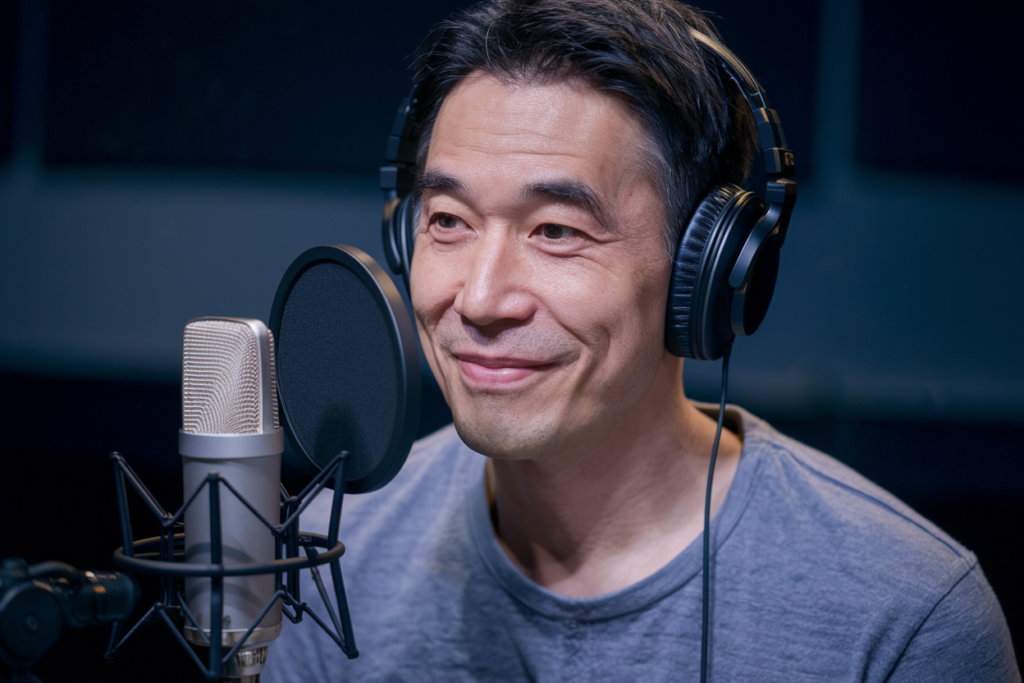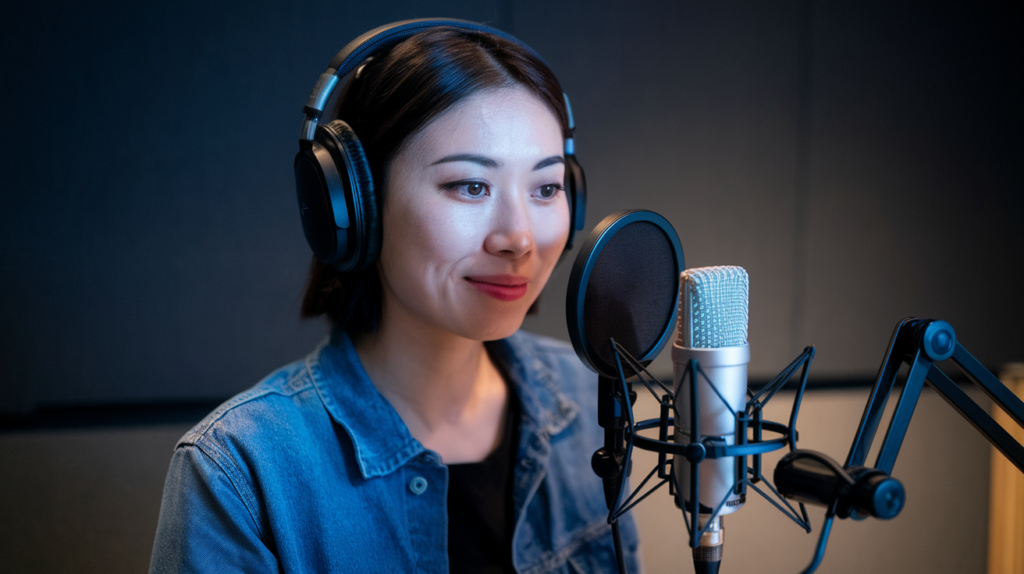Key Takeaways
- Standard Japanese as a Foundation: Standard Japanese (Hyojungo) serves as the universal language framework in Japan, making it ideal for beginners and broad communication in media.
- Importance of Clarity: Utilizing standard Japanese enhances clarity and professionalism in media productions, ensuring messages resonate with diverse audiences.
- Cultural Nuances of Regional Dialects: Engaging with regional Japanese dialects offers deeper cultural insights and authenticity, enriching the storytelling experience in localized media.
- Audience Consideration: Your choice between standard and regional Japanese should depend on your target audience; standard is suitable for broader demographics while regional dialects cater to specific cultural groups.
- Media Genre Matters: The genre and purpose of your content can influence your decision; educational materials typically benefit from standard Japanese, while niche genres gain authenticity from regional variations.
- Pros and Cons Evaluation: Weighing the advantages of both options—standard’s accessibility versus regional’s cultural richness—will help you make an informed choice that aligns with your goals.
Have you ever wondered whether to choose standard or regional Japanese for media? It’s a common dilemma for learners, creators, and fans alike. The choice can shape your understanding of the language and culture, impacting everything from your favorite anime to local news broadcasts.
Standard Japanese offers a familiar foundation, perfect for beginners and those looking to connect with a broader audience. But if you’re diving into specific regions or genres, embracing regional dialects can unlock deeper cultural nuances and authenticity. Understanding these differences not only enhances your experience but also enriches your communication skills. So how do you decide which path to take? Let’s explore the pros and cons of each option to help you make an informed choice that suits your needs.
Understanding Standard Japanese
Standard Japanese, known as „Hyojungo,“ forms the basis of communication across Japan. It’s characterized by its use in education, media, and formal settings.
Definition and Characteristics
Standard Japanese is derived primarily from the dialect spoken in Tokyo. Its vocabulary, grammar, and pronunciation create a unified language framework. Key characteristics include:
- Pronunciation: Clear articulation with distinct vowel sounds.
- Grammar: Consistent sentence structures that enhance comprehension.
- Vocabulary: A wide range of terms used universally across various contexts.
By learning standard Japanese, you gain a reliable foundation for effective communication and media consumption. It allows you to engage with news broadcasts, films, and literature without regional bias.
Importance in Media
Media heavily relies on standard Japanese for accessibility. Major TV networks and radio stations predominantly utilize it to reach broad audiences. This choice ensures that content resonates with viewers nationwide.
Utilizing standard Japanese is crucial for voiceover talent aiming to appeal to diverse demographics. Consistency in language fosters understanding among listeners unfamiliar with regional dialects or slang. Also, voice artists often choose standard Japanese when creating educational materials or corporate training videos because it promotes clarity and professionalism.
In essence, embracing standard Japanese empowers you to connect more effectively within the rich landscape of Japanese media while enhancing your overall linguistic proficiency.
Exploring Regional Japanese
Regional Japanese offers unique linguistic flavors that can enhance your media experience. Understanding these variations enriches your appreciation of Japan’s diverse culture and its people.
Overview of Regional Variations
Japan boasts numerous regional dialects, known as „ben,“ each with distinctive pronunciations, vocabulary, and expressions. Examples include Kansai-ben from the Osaka region, which is often characterized by its playful intonation and informal speech patterns. Another example is Hokkaido-ben, known for its unique lexical items influenced by Ainu language. These dialects reflect local customs and traditions, providing insights into specific communities across Japan.
When you engage with regional variants in media—be it films or anime—you gain exposure to authentic conversations that standard Japanese might not capture fully. Such immersion helps in understanding cultural nuances that add depth to storytelling.
Significance in Cultural Representation
Using regional Japanese in media plays a crucial role in authentic cultural representation. Voice actors who master local dialects bring characters to life while respecting their backgrounds, enhancing relatability for audiences familiar with those regions. This authenticity fosters a deeper connection between viewers and the content.
Media creators increasingly recognize the value of incorporating regional dialects to appeal to niche audiences. By doing so, they foster inclusivity while showcasing Japan’s rich tapestry of languages and cultures. Engaging with this diversity not only broadens your understanding but also supports localized storytelling that resonates on multiple levels.
Exploring regional Japanese opens up avenues for richer cultural engagement through voiceovers and performances infused with authenticity—an essential element for any captivating narrative.
Factors to Consider When Choosing
Choosing between standard and regional Japanese for media involves several important factors that can directly affect your experience. Understanding these elements helps you make an informed decision tailored to your needs.
Audience Demographics
Consider who your audience is. If you’re aiming for a broad demographic, standard Japanese might be the best choice. It resonates well with most listeners across Japan and ensures accessibility. On the other hand, if your target audience belongs to a specific region or cultural group, regional dialects can create a deeper connection. For example, using Kansai-ben may appeal more strongly to audiences in the Kansai region than standard Japanese would.
Media Genre and Purpose
Think about the genre of media you’re producing and its purpose. Educational content often benefits from standard Japanese due to its clarity and widespread understanding. Conversely, if you’re delving into local storytelling or niche genres like anime set in particular regions, incorporating regional dialects adds authenticity and enhances engagement. This approach allows voice actors to bring characters to life in a way that’s relatable and culturally rich.
By weighing these factors carefully, you can choose the right form of Japanese that aligns with both your goals and your audience’s preferences.
Pros and Cons of Each Choice
Choosing between standard and regional Japanese involves weighing their distinct advantages and disadvantages. Understanding these factors can help you make a more informed decision.
Advantages of Standard Japanese
Standard Japanese, or Hyojungo, offers several key benefits. First, it provides a solid foundation for effective communication across Japan. You’ll find that most educational materials, news broadcasts, films, and literature utilize standard Japanese, making it easier to engage with a wide variety of content.
Second, clarity is paramount in voiceovers using standard Japanese. Voice actors often rely on this dialect to ensure their performances resonate with diverse audiences. This consistency not only enhances professionalism but also broadens accessibility for listeners unfamiliar with regional variations.
Lastly, learning standard Japanese simplifies the process of branching out into other areas of the language. Once you grasp the fundamentals through standard forms, you can delve into regional dialects more easily without losing your footing.
Benefits of Regional Japanese
Regional Japanese brings unique flavors to media that enrich your experience as a viewer or listener. Engaging with various dialects like Kansai-ben or Hokkaido-ben allows you to appreciate cultural nuances that might be lost in standard interpretations.
Moreover, incorporating regional dialects adds authenticity to storytelling in voiceover work. When voice artists master local pronunciations and expressions, they enhance relatability in their performances. Audiences feel a deeper connection when they hear familiar accents or colloquialisms reflecting their own experiences.
Finally, choosing regional Japanese can create niche appeal within specific genres or demographics. For certain anime series or localized projects targeting particular cultural groups, using regional dialects fosters inclusivity while celebrating Japan’s rich tapestry of languages and cultures.
By considering these pros and cons carefully—whether you’re drawn to the universal reach of standard Japanese or the cultural depth offered by regional variants—you’ll be better equipped to select the option that aligns best with your goals.
Conclusion
Choosing between standard and regional Japanese for media ultimately depends on your goals and interests. If you aim for broad communication and ease of understanding, standard Japanese is your best bet. It’s the language of education and mainstream media, making it essential for those starting their journey.
On the other hand, if you’re looking to dive deeper into Japan’s rich cultural landscape, regional dialects can provide a unique perspective. They offer authentic expressions and nuances that standard Japanese might overlook. Your choice should reflect what resonates with you personally while enhancing your overall experience with the language.
By weighing these factors carefully, you’ll be well-equipped to make an informed decision that enriches your engagement with Japanese media. Whether you lean towards standard or regional dialects, each path offers valuable insights into Japan’s diverse linguistic heritage.
Frequently Asked Questions
What is standard Japanese, and why is it important for media consumption?
Standard Japanese, or „Hyojungo,“ is a widely-used form of the language derived from the Tokyo dialect. It serves as a foundation for communication across Japan and is essential in education and media. Learning standard Japanese ensures clear pronunciation and consistent grammar, enabling effective engagement with news, films, and literature.
How do regional dialects differ from standard Japanese?
Regional dialects, known as „ben,“ feature unique pronunciations, vocabulary, and expressions specific to various areas in Japan. Unlike standard Japanese, which offers broad accessibility, these dialects provide deeper cultural insights and authenticity that enrich media experiences by showcasing local flavors.
Who should learn standard Japanese versus regional dialects?
Beginners or those aiming for wide audience reach should start with standard Japanese due to its clarity and structured nature. In contrast, learners interested in specific cultures or genres may benefit from regional dialects to connect more authentically with niche audiences or particular storytelling styles.
What are the pros of learning standard Japanese?
Learning standard Japanese provides a solid communication foundation that facilitates understanding across various contexts. Its clarity makes it ideal for voiceovers in media production and serves as an effective stepping stone for eventually mastering regional dialects.
What benefits do regional dialects offer in media?
Regional dialects enhance storytelling by adding linguistic authenticity and cultural depth. They help create relatable characters in localized content while appealing to niche audiences who appreciate the uniqueness of their regions’ languages.
How does one decide between learning standard or regional Japanese for personal goals?
Consider factors like your interests—whether you prefer broad communication (standard) or deep cultural connections (regional). Assess the genre of content you enjoy; educational materials often use standard Japanese while niche genres thrive on regional expressions to enhance engagement.
Can I learn both standard and regional forms of Japanese simultaneously?
Yes! While starting with standard Japanese provides a strong base, many learners choose to explore regional dialects later. This approach allows you to enjoy diverse aspects of Japan’s culture while developing comprehensive language skills over time.







